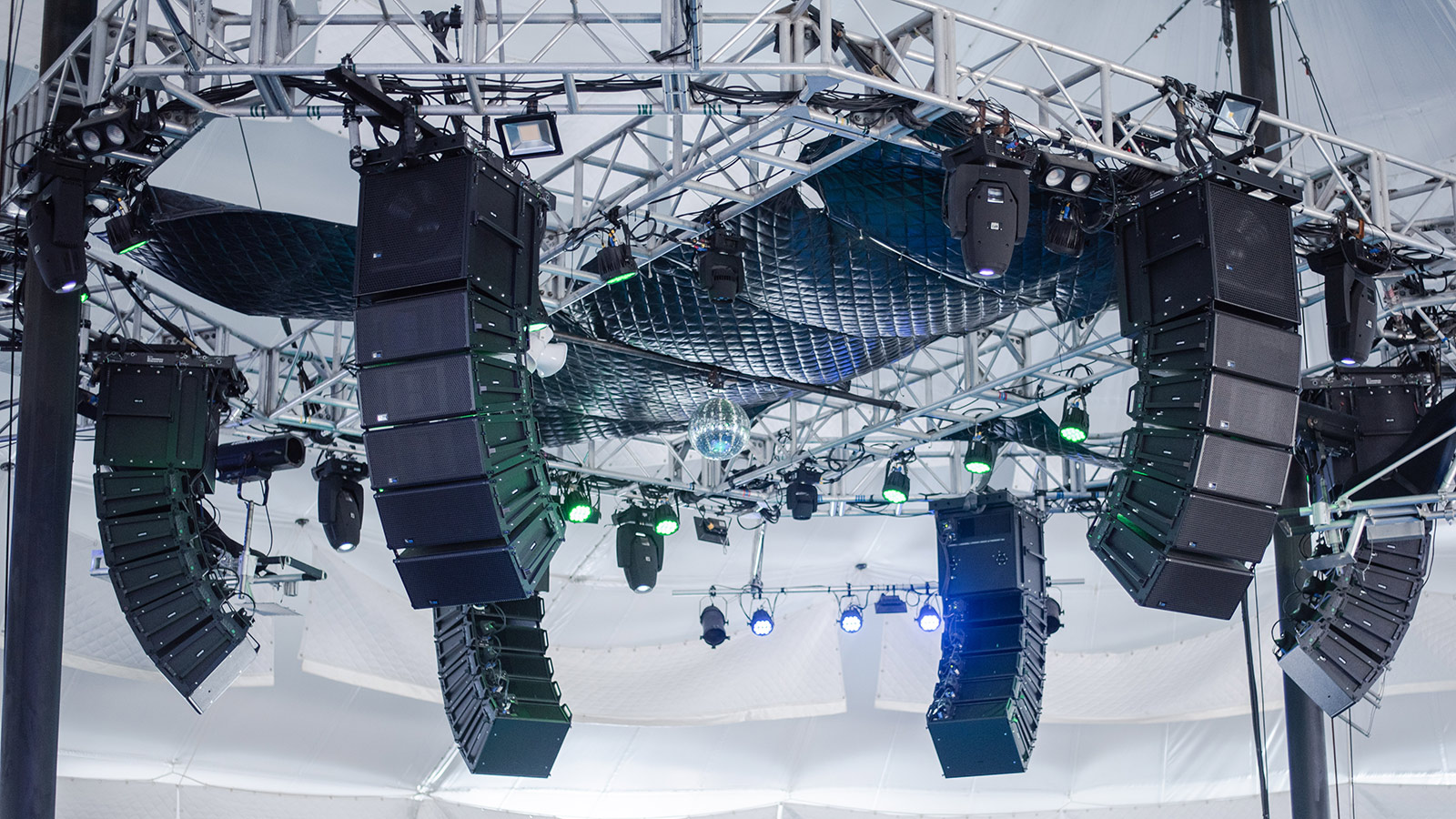Everybody has been pumped with the improvements this year, especially the uniformity and control. Also, the power to weight ratio of the LEOPARDs and 900-LFCs lets us hang a lot more power and still keep under the weight limit. This is particularly noticeable in the low end. It feels like we have double the subs we had before.”
John CorettoSystem Designer, WHB Concert and Production Services
The Cape Cod Melody Tent was among dozens of “music circus” tents that sprouted up around the United States in the 1950s, with most of these seasonal venues presenting light operettas and summer stock musicals. By the end of the century nearly all the tents had permanently folded, yet the last two of their kind — the Cape Cod Melody Tent and its nearby sister venue, the South Shore Music Circus — continue to thrive as summer showcases for national touring acts. Looking to extend even further into its seventh decade, the Cape Cod Melody Tent upgraded to a Meyer Sound LEOPARD line array system at the beginning of the 2019 season.
“We’d had the Meyer M’elodie arrays in here since 2007 and they did a good job,” says Tony Raine, director of production for the two venues. “But we were due for a change, and the improvements in focus and uniformity of coverage with the LEOPARDs have been clearly noticeable. We’ve received great feedback from the visiting engineers this year.”
The Cape Cod Melody Tent in Hyannis, Massachusetts seats about 2,300 in a circular bowl surrounding a rotating stage. The vinyl tent is raised before the season begins in May and taken down each September.
The new symmetrical system comprises six arrays, each with five LEOPARD loudspeakers under a 900‑LFC low frequency control element. The front fills on one side are six MM‑4XPD miniature directional loudspeakers. (Fills are not needed on the other side as seats are set further back to accommodate an orchestra pit, placing them into the field of the LEOPARD arrays.) A GALAXY 816 network platform supplies drive and optimization, with an RMServer enabling comprehensive remote monitoring.
The system is provided by WHB Concert and Production Services of Hampton, New Hampshire for the summer season under a long-term leasing agreement. In the off season, the system is integrated into the company’s inventory and used for a variety of entertainment, corporate and community events.
“Everybody has been pumped with the improvements this year, especially the uniformity and control,” says WHB’s John Coretto, who designed the new system in consultation with Meyer Sound Design Services. “Also, the power to weight ratio of the LEOPARDs and 900-LFCs lets us hang a lot more power and still keep under the weight limit. This is particularly noticeable in the low end. It feels like we have double the subs we had before.”
The new front fill system has surprised everybody with its power and depth of coverage. Though small enough to be mounted on the five-inch wide lip surrounding the rotating stage, the mighty little MM-4XPD loudspeakers have even served as an auxiliary house system.
“They have been absolutely fantastic,” asserts Raine. “They have made a huge difference, particularly for the VIPs who sit in the front rows. And for the kids’ shows in the daytime, the MM-4XPDs work brilliantly as the main system. The staging is proscenium style, facing that direction only, and that little system pushes all the way to the back. Even with a dozen open lavs on stage we don’t have a problem because the directional pattern keeps all the low-mids completely off the stage.”
Raine says the diminutive loudspeakers even shouldered the entire audio load for a comedy show with an audience of nearly 1,200 filling one side of the tent.
Along with popular comedians, the 2019 summer schedule included a broad spectrum of musical styles, including classic rock (Foreigner), jazz (Chris Botti), Motown (Temptations and Four Tops), reggae (Toots and the Maytals), blues rock (Joe Bonamassa) and Americana (Avett Brothers).
Originally called the Cape Cod Music Circus, the venue was launched in 1950 as a venture by British actress Gertrude Lawrence, with the current name adopted in 1953. One-week runs of summer stock shows continued as the main fare through the 1960s. Notable music acts (Richie Havens, Judy Collins) often would fill in nights between shows, and eventually transitioned into the primary programming. When Judy Garland played the tent, her teenage daughter came along and worked one summer as lighting intern and later made her stage debut in the tent as a dancer. Other legends visiting the stage include Bob Hope, Tony Bennett and Johnny Cash.
The Cape Cod Melody Tent and South Shore Music Circus (Cohasset, Massachusetts) have been owned and operated by the non-profit South Shore Playhouse Associates for more than 60 years, with combined attendance at the two venues of approximately 200,000 for each summer season.
The “music circus” phenomenon was launched in Lambertville, New Jersey by entrepreneur St. John Terrell in 1949. Nearly 40 other similar ventures were operating when the theatrical form peaked in the late fifties. The two tents still flourishing in Massachusetts are the only known survivors.




